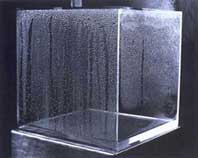 Hans Haacke: Condensation Cube
Hans Haacke: Condensation Cube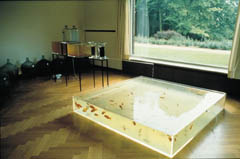 Hans Haacke: "Rhine-Water Purification Plant" (filtering
polluted Rhine water into a tank of goldfish and back into
the ground)
Hans Haacke: "Rhine-Water Purification Plant" (filtering
polluted Rhine water into a tank of goldfish and back into
the ground)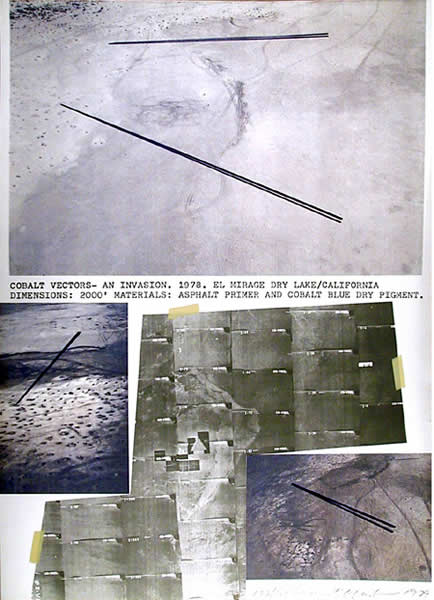 Dennis Oppenheim: Cobalt Vectors
Dennis Oppenheim: Cobalt VectorsTCS 152:New Trends in Art and Technology
Book LinK: Syllabus Links Notes Course Forum: Arthropods and Mammals
Oct. 17:Environmental Art and
Eco-Action
Eco Art and approaches to
ecologies
Roots of ecology as a word: Ernst Haeckl: Literally it means the logos, refleCtion of, or study of the OIKOS, or HOUSEHOLD. Planet is a household or an ecology: the issue is a domestic one.
1960s, gallery artists (particularly some who worked in NYC) began to examine the boundaries of the gallery itself and investigate ways to talk about spaces and processes that defy traditional forms of representation, such as ecological and geological processes
1960s there were also new writers who were looking critically at environmental consequences of industrialization:
Reading Agarwal & the notion of Personal Ecology:
extending the
problem of how humans can live together and negotiate survival demands
while not destroying substrates we depend on for life: water, social
relations/fabric, food production, other species. His quest for personal
ecology asks questions of how to integrate problems with social ones.
Human behavior is something engineers dont classically take into
account.
Precursors (60s) to Ecological and Environmental Art.
 Hans Haacke: Condensation Cube Hans Haacke: Condensation Cube |
 Hans Haacke: "Rhine-Water Purification Plant" (filtering
polluted Rhine water into a tank of goldfish and back into
the ground) Hans Haacke: "Rhine-Water Purification Plant" (filtering
polluted Rhine water into a tank of goldfish and back into
the ground) |
 Dennis Oppenheim: Cobalt Vectors Dennis Oppenheim: Cobalt Vectors |
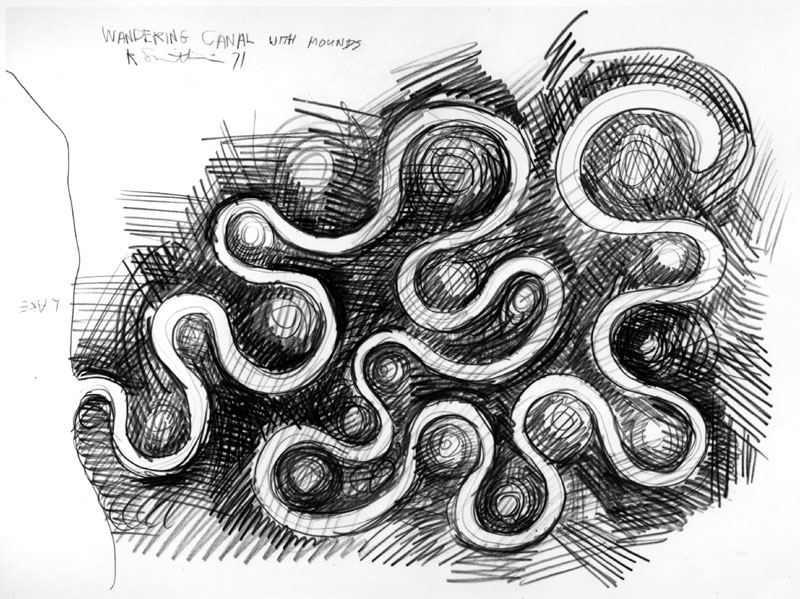 Robert Smithson: Wandering Canal (EArthworks) Robert Smithson: Wandering Canal (EArthworks) |
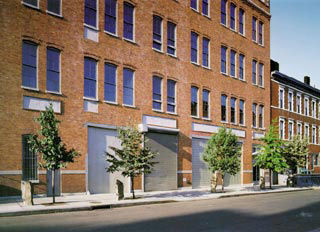 Joseph Beuys: 7000 Oaks Joseph Beuys: 7000 Oaks |
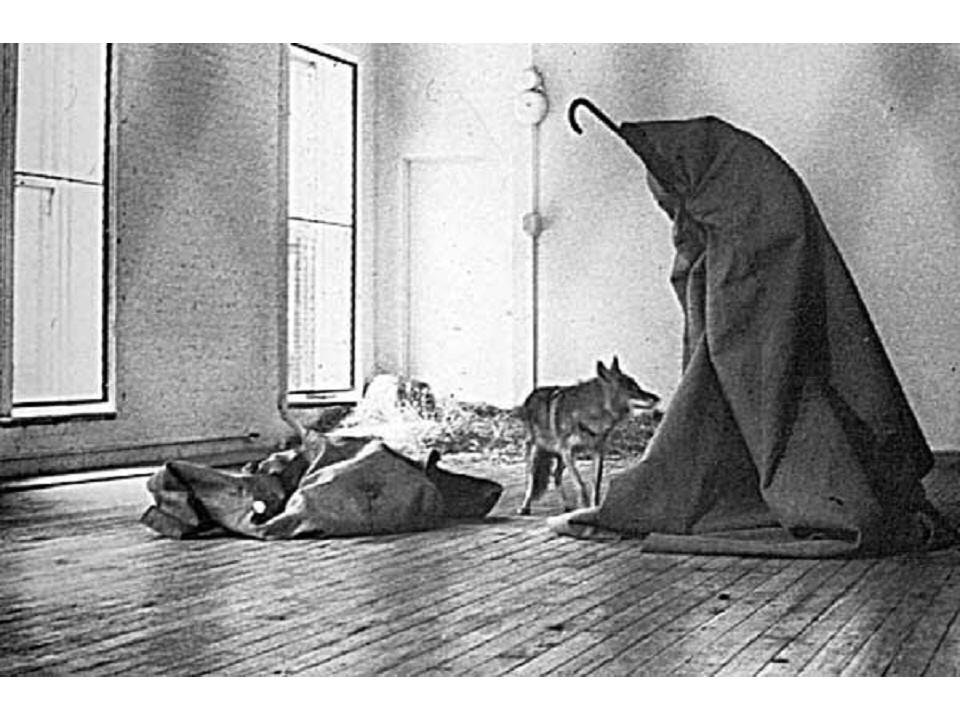 Joseph Beuys, I Like America and America Likes Me: shamanic
investigations of materials, animals, presence and politics Joseph Beuys, I Like America and America Likes Me: shamanic
investigations of materials, animals, presence and politics |
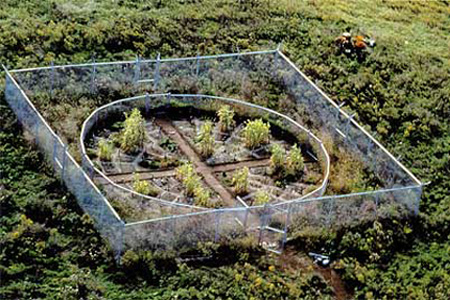 Mel
Chin: Revival Field Mel
Chin: Revival Field |
 using hyperaccumulating plants to extract heavy
metals from contaminated soil using hyperaccumulating plants to extract heavy
metals from contaminated soil |
|||
 |
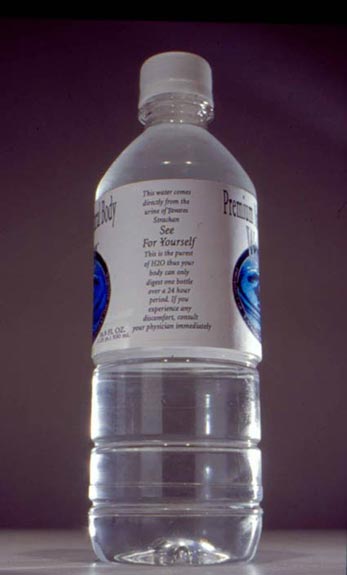 | 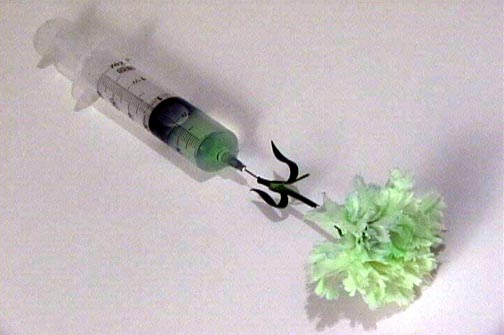 |
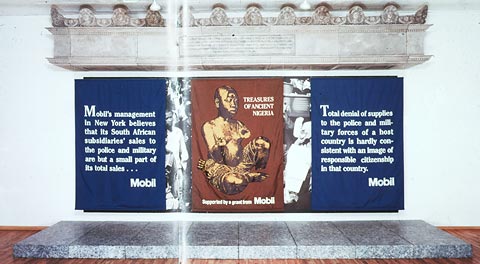 | |
| Hans Haacke: Condensation Cube- taking the cube, the minimalist object par excellence, to demonstrate the working of a system Readymade and Marcel Duchamp (1917) "Since the tubes of paint used by an artist are manufactured and readymade products we must conclude that all the paintings in the world are "Readymades aided" and also works of assemblage."( Duchamp in 1961 on the readymade) This is a mass-produced object he purchased in a store. How does it contest the already accepted idea of what is art? How does it introduce the machine into an earlier conception of how art is used to represent the world?
|
Phil Ross: mycology and
bio-engineering as sculpture
How does he make this transition seem natural? How does he reveal or conceal a connection between discovery (pure science and wonder) and commerce through applications of technology? | Institutional Critique- Hans Haacke : MetroMobiltan, Shapolsky Real Estate et al what exactly is the machine? what technologies are involved in the kind of coverup he exposes by showing signs of relationships between the museum exhibition and its funding sources? • communication techs • weapons (over time...) • petroleum (over time..) • transportation technologies (over space and time..)
| ||